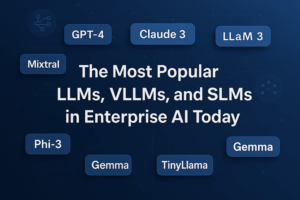In recent years, the crypto “energy crisis” sparked global alarm. Bitcoin mining alone consumed roughly 0.4% of global electricity, and crypto‑mining + data centers already made up about 2% of world demand in 2022 [1]. But now, AI workloads—particularly generative and large‑language‑model (LLM) operations—are poised to make an even bigger dent in our energy systems […]

As enterprises rapidly adopt AI to improve efficiency, customer experience, and innovation, the choice of model architecture has become a critical factor. Whether it’s deploying a massive Large Language Model (LLM), an efficient Very Large Language Model (VLLM), or a compute-friendly Small Language Model (SLM), organisations are increasingly strategic about balancing performance, cost, and accuracy. […]

The rise of large language models (LLMs) has driven significant demand for efficient inference and fine-tuning frameworks. One such framework, vLLM, is optimised for high-performance serving with PagedAttention, allowing for memory-efficient execution across diverse hardware architectures. With the introduction of new AI accelerators such as Gaudi3, H200, and MI300X, optimising fine-tuning parameters is essential to […]

The evolution of artificial intelligence (AI) has placed increasing demands on hardware, requiring processors that deliver high efficiency, scalability, and performance. Intel’s Xeon 6 marks a substantial leap in AI capabilities, particularly in its Advanced Matrix Extensions (AMX), which have seen major improvements over Xeon 4 and Xeon 5. These enhancements make Xeon 6 a […]
